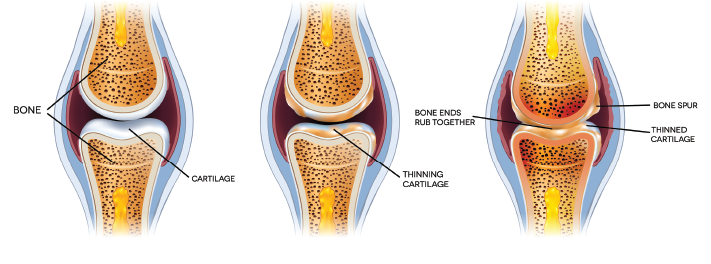Studies highlighting the large numbers of people affected by knee osteoarthritis (OA) point to what clinicians who treat knee OA have been seeing for the past few decades: a substantial increase in the prevalence of knee OA in the U.S. and globally. Roughly 250 million people are affected by knee OA worldwide, and about 14 million people in the U.S. have been diagnosed with the disease in the past 20 years.1,2
This high prevalence of knee OA is fairly new, and its rapid rise over the past several decades coincides with two emerging realities of contemporary life: People are living longer and living heavier. Most studies suggest that the increased prevalence of knee OA during the past several decades correlates with both an aging population as well as rising obesity. It is widely thought that knee OA is a function of age and weight, making it only marginally preventable.
“People tend to think of knee OA as related to age and body mass index (BMI); you can’t control aging, and the obesity epidemic has been pretty intractable,” says Ian Wallace, PhD, who works in the Department of Human Evolutionary Biology at Harvard University in Cambridge, Mass. “People have really started to almost think of knee OA as an unmanageable disease; once you get it, you either begin taking pain medication, or if you have good insurance, you get a knee replacement.”
But is this the full picture?
Dr. Wallace doesn’t believe so. As a paleoanthropologist, he is used to looking at things through a long lens, as he and his colleagues did recently in a study that reached back to prehistoric times to gain insight into the etiology of knee OA and better understand its current high prevalence.3 That they found near double the rate of knee OA over the past 50 years compared with past ages is not surprising, but what is surprising, he says, is the finding that age and weight may not explain the whole picture of why the prevalence has increased so drastically in current times.

Tefi / shutterstock.com
“We found that knee osteoarthritis is far more common [now] than in the past,” says Dr. Wallace. “But the surprising finding is that it is not completely due to the two risk factors of age and BMI.”
This high prevalence of knee OA … coincides with two emerging realities of contemporary life: People are living longer & living heavier.
Learning from the Past

Dr. Wallace

